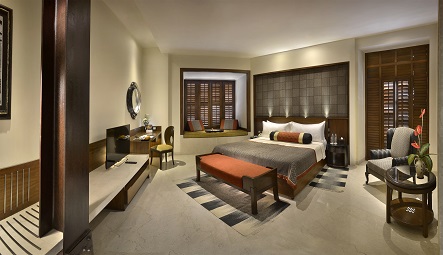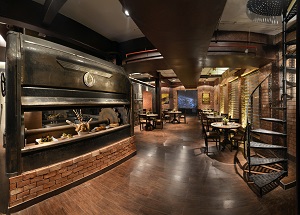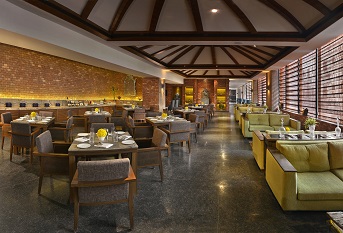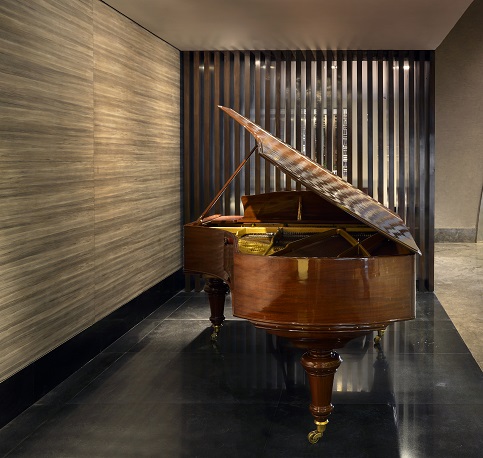For luxury-seekers and ever-exploring travellers wishing to experience the timeless charm and opulence of the Colonial era in the eastern belt of India, look no further beyond and head to The Lalit Great Eastern Kolkata which forms an icon of Indian hospitality. Spread over 3 acres of land, the 19th Century palatial building has been the premier luxury, five-star hospitality set-up in Asia and lies on Old Court House Street in Dalhousie Square in the hub of the city.
The hospitality entity began its journey at a time when Calcutta was the glittering, imperial capital of Britain’s Indian Empire. In an attempt to experience the bygone charm of the Raj era, it’s best to take a Heritage Walk in the hotel that will give you a chance to travel back in time. Way, way back in 1830, a British baker named David Wilson had set up a bakery that formed the favorite haunt for the Officers of the East India Company. Enthused by the success of the bakery, David Wilson came up with a luxury hotel in 1840 that was renamed Auckland Hotel after the then Governor-General of India. Widely known as Wilson’s Hotel, it was in the form of a “C” shape that emerged as a luxury hospitality landmark during the reign of British India. This is incidentally the first hospitality property in the country that was illuminated in 1883.
The Great Eastern Hotel renamed The Lalit Great Eastern Kolkata has brought the concept of luxury, five-star hospitality not only to India but also to Asia during the Raj era.
As time flew by, the heritage property was reputed as the Great Eastern Hotel in Independent India. The historic property was acquired by The Lalit Suri Hospitality Group in 2005. It was quite a herculean task for the new hospitality group to overhaul the property and after seven long years of grueling work, the property opened its doors as The Lalit Great Eastern sometime on November 19, 2013.




In today’s times, the luxury property has three conspicuous blocks- The Victorian Block, the Edwardian Block, and the Contemporary Block, of which the first two are the heritage blocks. The Heritage Walk begins in the Main Lobby in the Contemporary Block that has the symbol of the “Head of Fish” which is considered a good luck charm in West Bengal. At one corner of the Main Lobby is the grand piano that should not-be-missed-out and was manufactured by M F Rachal & Sons of Hamburg, Germany. The piano once occupied a pride of place at Maxim’s Bar in the bygone Auckland Hotel. There are ancient vats that were once used to knead dough in the bakery and now serve as planters at the entrance of the lobby.
The dining options are housed in the Contemporary Block including the Tea Lounge and Alfresco, the all-day dining outlet sprawling over 3,800 sq. ft. This happens to be the only food outlet in the city that has natural light entering within the comfort of the room. It makes use of green energy and care is taken that no food goes wasted. The outlet has options for both a la carte and buffet menus at the same time. Based on four pillars, the cuisine comprises Bengali, Nizami, Anglo-Indian, and Tangra Chinese- the local Chinese fare.




The Great Ballroom and Rejuve The Spa along with a swimming pool are all in the new block. At the spa, the treatment therapies start from Rs 2,000 onwards and the presence of an aqua bed for body scrubbing and removing dead cells is quite unique. There are facilities for Aromatherapy, Ayurvedic treatments, and Balinese and Swedish massages.
The Victorian Tower provides wonderful glimpses of a wide array of artifacts comprising Venetian mirrors and blue potteries that were crafted in Bengal. The interiors are highly artistic done up with shola works that are eco-friendly, conventional artworks of Bengal.
At Edwardian Block, one comes across huge iron beams and there are antique items including terracotta works, century-old charcoal irons, bread molds, and a three-legged table on display. The Edwardian Block has spacious legacy rooms each replete with a bay window. The 8-feet gigantic cup perched on the balcony was received by A L Billimoria, the former Chairman of the hotel from Queen Elizabeth II that deserves special mention.
The age-old iron staircase that brings you down to The Bakery is in the Edwardian Block. The presence of the century-old grand, old oven in The Bakery from the house of England’s Baker Perkins Limited makes it stand apart from other bakeries in the eastern region of India. The oven is no longer in use but is well-preserved and adorns the bakery. A portion of the wall of the bakery has been untouched in order to pay tribute to the old bakery. Lying next to the Bakery is Wilson’s Pub. The Heritage Walk is on offer on all days and begins from 12 pm to 4 pm at least 48 hours prior to booking. It comes for Rs 750-plus taxes per person along with high tea.




The luxury hotel is all set to open the largest terrace in the hospitality realm of Kolkata. According to Kamal Raza, General Manager, The Lalit Great Eastern Kolkata, “The Lalit Terrace spread over 15,000 sq. ft. will be opened for MICE travellers on Christmas. Our hospitality group boasts of a central location and we also have plans to expand our bakery outlets in the city in the New Year. The year 2022 has been a year of revival for the hospitality industry after being freed from the chains of Lockdown. The surge in travel has sent a positive impact on the hospitality sector and will take a couple of years to recover. However, the biggest learning from the pandemic is that life is unpredictable which has affected the human race. We have learned ways to perform better with less. Good or bad times do not last long and we have to gear up to handle the crisis as well as good times.”
Armed with a stint of 21 years in hospitality and with global exposure, Raza comes with a vast repertoire of experience in managing and supervising large inventory in luxury hotels. “Business travel has made a comeback and we are looking for more MICE and global inbound travel next year. With Kolkata all set to host the 2023 G20 Summit and Cricket World Cup 2023, we are expecting more business travellers in the city. This is the first phase post-unlocking and leisure travel has kicked off only in the domestic sector. Global leisure tourists are high spenders and spend a lot on food and beverage. Once global leisure travel begins, it will offer a fillip to the food and beverage sector,” said Raza. He also pointed out that the biggest challenge in current times is the absence of skilled manpower that has been exhausted during a pandemic.
The tourism industry is the largest employment-generating industry. Raza further said, “Both the Central and state governments need to provide an impetus to the travel and hospitality industry of India. The country has to be promoted as a safe and secure destination and Bengal is not only a destination of monuments but replete with adventure tourism. The state has a plethora of historic value and offers cultural exposure to the youngsters.”
Swaati Chaudhury
Also, Read
TRANSFORMING TOURISM BY MEASURING ITS SUSTAINABILITY
Watch on Youtube
